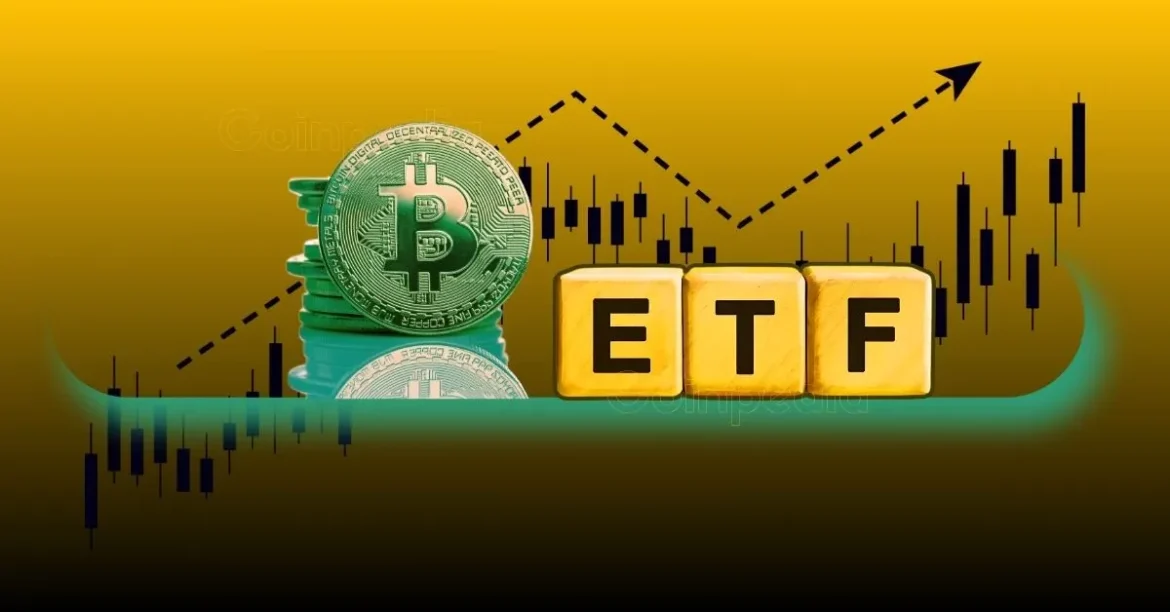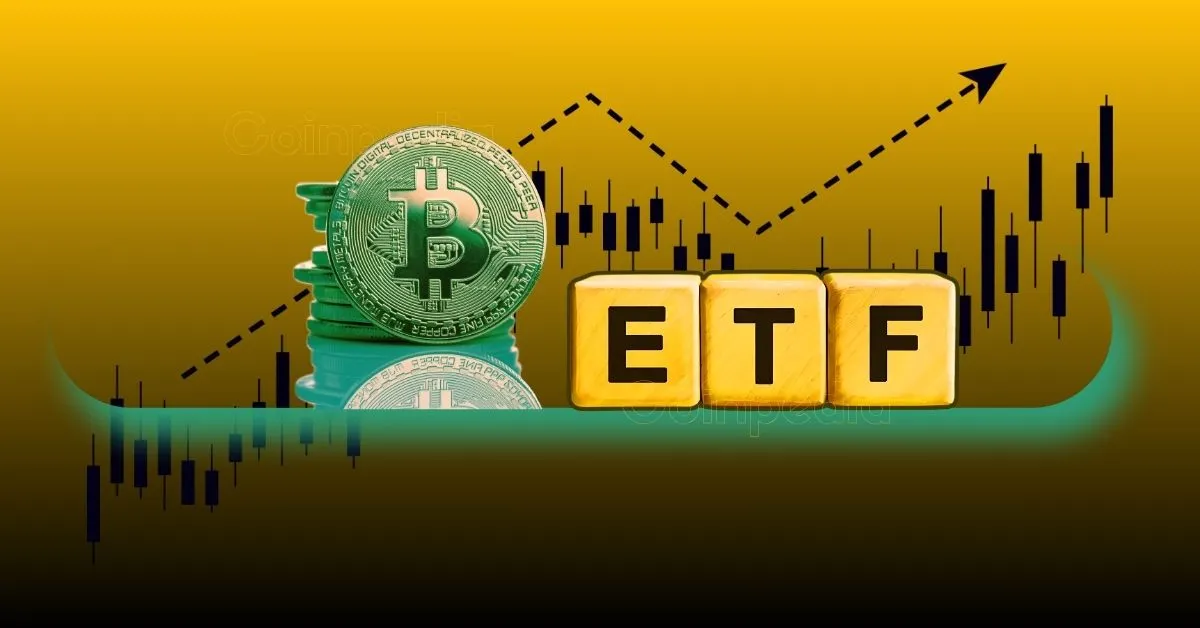The year 2025 has witnessed a financial phenomenon that many predicted but few fully grasped the scale of: the explosive growth of Bitcoin ETFs. In a mere 18 months since their launch in January 2024, U.S. spot Bitcoin ETFs have crossed the monumental $50 billion mark in cumulative net inflows. This isn’t just about numbers; it’s a seismic shift in how institutional and retail investors alike perceive and access the world’s leading cryptocurrency.
The Rise of the Titans: ETF Dominance
Leading this charge is BlackRock’s iShares Bitcoin Trust (IBIT), a fund that has not only set records but also redefined expectations. With over 700,000 BTC held and a staggering $53 billion in assets, IBIT stands as a testament to the power of institutional backing and the pent-up demand for regulated Bitcoin exposure. Fidelity’s FBTC closely follows, contributing significantly to the overall surge.
These ETFs have become a primary channel for institutional capital, streamlining the process for large investors to allocate funds to Bitcoin without the complexities of direct ownership, such as managing private keys and navigating cryptocurrency exchanges. BlackRock’s IBIT has even reached a point where it generates more revenue than its S&P 500 ETF, underscoring the magnitude of this shift.
The success of these ETFs can be attributed to several factors. Firstly, the regulatory approval by the U.S. Securities and Exchange Commission (SEC) has provided a level of legitimacy and security that was previously lacking. This approval has reassured institutional investors, who are now more willing to allocate significant capital to Bitcoin through these regulated vehicles.
Moreover, the infrastructure supporting these ETFs has matured significantly. Custodial services, such as those provided by Coinbase and Fidelity Digital Assets, have enhanced the security and reliability of holding Bitcoin on behalf of ETFs. This has further bolstered investor confidence, as the risk of loss or theft is mitigated by professional custodians.
Who’s Buying? Unveiling the Driving Forces
The demand fueling this $50 billion milestone comes from a diverse array of sources. Institutions, corporations, and asset managers are all jumping on board, driven by a mix of factors:
- Institutional Validation: The approval and launch of spot Bitcoin ETFs by the SEC have legitimized Bitcoin as an asset class in the eyes of traditional financial institutions. This stamp of approval has lowered the barrier to entry for risk-averse investors.
- Inflation Hedge: With ongoing economic uncertainty and concerns about inflation, Bitcoin is increasingly seen as a store of value, akin to gold. ETFs provide a convenient way to hedge against these risks.
- Diversification: Institutional investors are constantly seeking new avenues for diversification. Bitcoin’s unique properties and low correlation with traditional assets make it an attractive addition to portfolios.
- FOMO (Fear of Missing Out): As Bitcoin’s price continues to rise, fueled by ETF inflows, a sense of urgency is gripping the market. Investors who were previously on the sidelines are now rushing to get in on the action.
Beyond these primary drivers, the demographic of investors has also evolved. While early adopters were predominantly retail investors and tech-savvy individuals, the current influx is largely driven by institutional players. This shift is evident in the size of the inflows, with some days seeing net inflows exceeding $600 million. Such large-scale investments are typically characteristic of institutional participation rather than retail.
The Numbers Don’t Lie: Key Metrics and Milestones
Beyond the headline $50 billion figure, several other metrics highlight the significance of this trend:
- Bitcoin Dominance: Bitcoin accounts for nearly 83% of all inflows into digital asset investment products this year, solidifying its position as the leading cryptocurrency.
- Market Share: BlackRock’s IBIT has captured a significant market share, sometimes exceeding 50%, showcasing its popularity among institutional investors.
- Trading Volumes: US spot Bitcoin ETFs have surpassed $50 billion in cumulative trading volume, indicating high liquidity and investor interest.
- Daily Inflows: On several occasions, these ETFs have seen daily net inflows exceeding $600 million, demonstrating the strength of demand.
These metrics underscore the robust appetite for Bitcoin exposure among investors. The high trading volumes and consistent inflows suggest that this is not a fleeting trend but a sustained shift in investment behavior. The dominance of Bitcoin in the digital asset space further reinforces its status as the premier cryptocurrency for institutional investment.
The impact of these ETFs is also evident in the broader market dynamics. As ETFs accumulate Bitcoin, the supply available on exchanges decreases, creating a supply shock that drives up the price. This phenomenon has been observed in the past, but the scale and speed of the current ETF inflows have amplified this effect.
Beyond Bitcoin: The Altcoin ETF Horizon
While Bitcoin ETFs are currently dominating the market, the success of these products has paved the way for potential altcoin ETFs. There is growing anticipation that ETFs for Solana, XRP, and Litecoin could be on the horizon, pending SEC approval. This expansion could further broaden the appeal of cryptocurrency investments and attract even more capital into the space.
The potential introduction of altcoin ETFs could have several implications. Firstly, it could diversify the cryptocurrency market, reducing the concentration of capital in Bitcoin. This could lead to a more balanced and resilient market, less susceptible to the volatility of a single asset.
Secondly, altcoin ETFs could attract a different set of investors. While Bitcoin is often seen as a store of value, altcoins like Solana and XRP are associated with different use cases, such as smart contracts and cross-border payments. This could appeal to investors looking for exposure to specific blockchain technologies or applications.
However, the path to altcoin ETFs is not without challenges. The regulatory framework for these assets is less established, and the SEC has been cautious in approving ETFs for cryptocurrencies other than Bitcoin. The approval process for altcoin ETFs is likely to be more rigorous, requiring extensive evidence of market maturity, liquidity, and investor protection.
Impact on Bitcoin’s Price and Market Dynamics
The massive inflows into Bitcoin ETFs have had a direct and significant impact on Bitcoin’s price. As ETFs accumulate Bitcoin to meet investor demand, the available supply on exchanges decreases, creating upward pressure on the price.
- Price Targets: Some analysts predict that Bitcoin could reach $117,000 or even $200,000 in 2025, driven by continued ETF inflows.
- Reduced Volatility: While Bitcoin is known for its volatility, the presence of large institutional investors through ETFs may help to stabilize the price and reduce sharp swings.
- Market Maturity: The growth of Bitcoin ETFs signals a maturing market, attracting more sophisticated investors and reducing the influence of retail speculation.
The price targets are based on several factors, including the continued inflows into ETFs, the halving event expected in 2024, and the broader macroeconomic environment. The halving, which reduces the supply of new Bitcoin, is expected to further exacerbate the supply shock caused by ETF demand.
The reduced volatility is a notable development. Institutional investors typically have a longer-term horizon and are less likely to engage in speculative trading. This can lead to a more stable market, with less pronounced price swings. However, it’s important to note that Bitcoin’s volatility is still influenced by various factors, including regulatory developments and macroeconomic trends.
A Word of Caution: Potential Risks and Challenges
Despite the overwhelmingly positive narrative, it’s essential to acknowledge the potential risks and challenges associated with Bitcoin ETFs:
- Regulatory Uncertainty: The regulatory landscape for cryptocurrencies is still evolving, and changes in regulations could impact the operations and appeal of Bitcoin ETFs.
- Market Corrections: Bitcoin is still a volatile asset, and a significant market correction could lead to outflows from ETFs, exacerbating the price decline.
- Concentration Risk: The dominance of a few key players, such as BlackRock and Fidelity, could create concentration risk in the ETF market.
- Custody Concerns: While ETFs alleviate the need for individual investors to manage their own private keys, they still rely on custodians to securely store the underlying Bitcoin.
The regulatory uncertainty is a significant concern. The SEC and other regulatory bodies are still grappling with how to oversee the cryptocurrency market. Changes in regulations, such as stricter reporting requirements or restrictions on ETF operations, could impact the appeal and functionality of these investment vehicles.
Market corrections are an inherent part of any financial market, and Bitcoin is no exception. A significant price decline could lead to outflows from ETFs, as investors seek to mitigate losses. This could create a feedback loop, where falling prices lead to more outflows, further depressing the price.
The concentration risk is another area of concern. The dominance of a few large players in the ETF market could lead to a lack of competition and potential market manipulation. It’s crucial for regulators to monitor this aspect and ensure a level playing field for all participants.
A New Era for Digital Assets
The $50 billion milestone achieved by Bitcoin ETFs is more than just a financial data point; it represents a fundamental shift in the perception and accessibility of digital assets. These ETFs have bridged the gap between traditional finance and the world of cryptocurrency, opening the door to a new era of institutional adoption and mainstream acceptance. While challenges remain, the trajectory is clear: Bitcoin and other digital assets are here to stay, and ETFs are playing a crucial role in their evolution.
The Unfolding Legacy
The Bitcoin ETF surge to $50 billion marks not just a milestone, but the beginning of a transformative chapter in finance, where digital assets increasingly integrate with and influence traditional investment strategies, reshaping the financial landscape for years to come. This integration is likely to accelerate as more institutional investors recognize the value and potential of digital assets. The success of Bitcoin ETFs could also pave the way for other innovative financial products, such as futures ETFs, options ETFs, and even ETFs for decentralized finance (DeFi) protocols.
As the market matures, we can expect to see further developments in the regulatory framework, custody solutions, and market infrastructure. These advancements will make it easier for investors to access and manage their digital asset holdings, further driving adoption and growth.
In conclusion, the $50 billion milestone is a testament to the growing acceptance and integration of digital assets into the traditional financial system. It signifies a shift in investor behavior, regulatory attitudes, and market dynamics. While challenges and risks remain, the overall trajectory is positive, and the future of digital assets looks bright. The journey has just begun, and the next chapter promises to be even more exciting and transformative.





